You’ll uncover that changing a small living room dining room combo doesn’t require sacrificing style or functionality. Whether you’re working with 200 square feet or 400, these proven design strategies will help you create a space that feels both spacious and inviting. From clever furniture arrangements to multi-purpose solutions, each idea has been tested in real homes with real constraints. Let’s investigate how you can make your compact space work harder and smarter.
Strategic Furniture Placement for Maximum Flow

Three key principles guide successful furniture placement in a small living-dining combo: space optimization, flow creation, and zone definition.
Position your furniture with clean lines against walls to maximize open areas and create natural pathways.
You’ll alter your small space by arranging larger pieces diagonally, which breaks up the room’s rigid lines.
Add round dining tables to soften corners and improve traffic flow between zones.
Define Zones With Area Rugs and Lighting

Clever use of area rugs and strategic lighting creates distinct zones that convert your small living-dining combo into a well-organized space.
Choose contrasting area rugs to visually separate your living and dining areas while maintaining design harmony.
Add pendant lights above your dining table and place floor lamps strategically in your living space.
Install dimmers to easily shift the mood from daytime functionality to evening intimacy.
Multi-Purpose Furniture Solutions
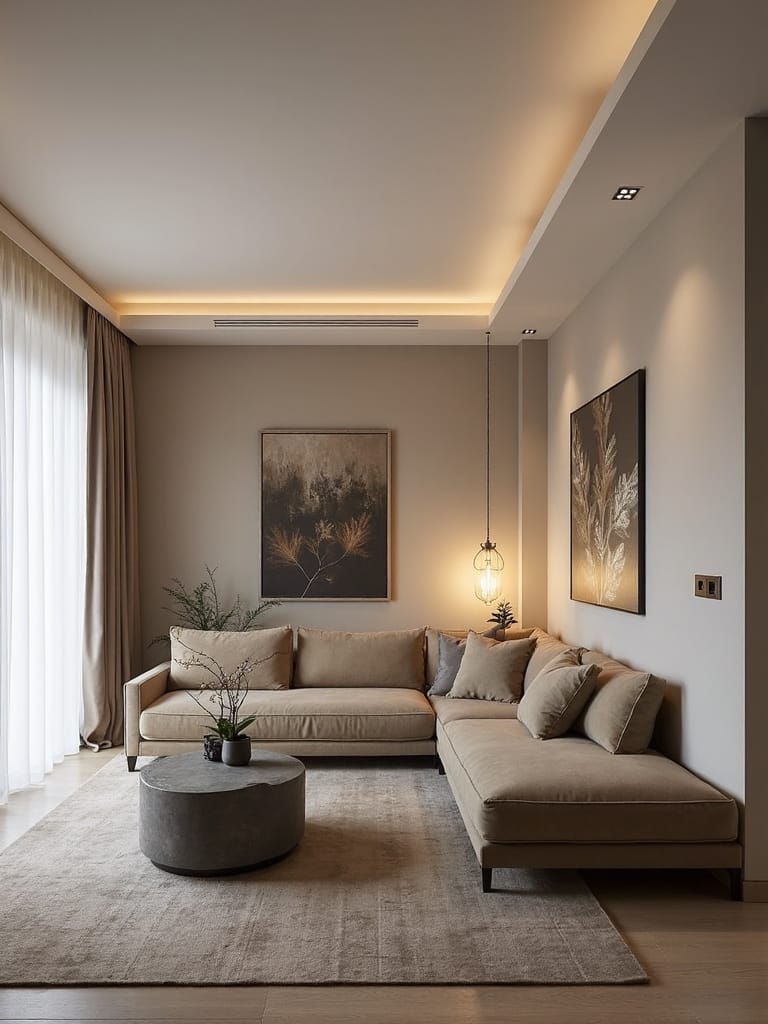
Making the most of every square foot becomes effortless when you select furniture that serves multiple purposes in your living-dining combo.
An expandable dining table adapts to your gatherings, while storage ottomans offer hidden space for dining essentials.
Consider versatile console tables that work as buffets or workstations, and add nesting tables you can easily tuck away.
Choose benches that shift seamlessly between dining and living areas.
Window-Adjacent Dining Setups
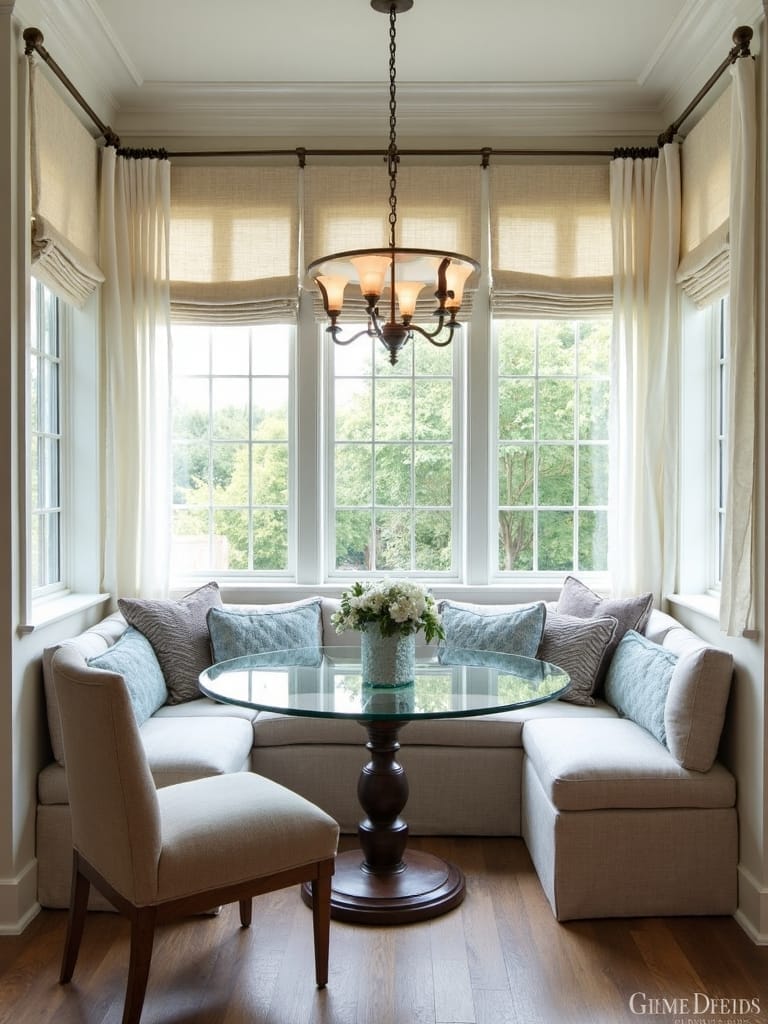
Natural light converts a dining area into an inviting sanctuary when you position your table near windows.
In your small living room dining room combo, maximize this setup by choosing low-profile seating that won’t block the view.
Add a round table to improve flow, and enhance the space with windowsill plants.
You’ll create a cozy dining nook that’s perfect for any meal.
L-Shaped Seating Arrangements
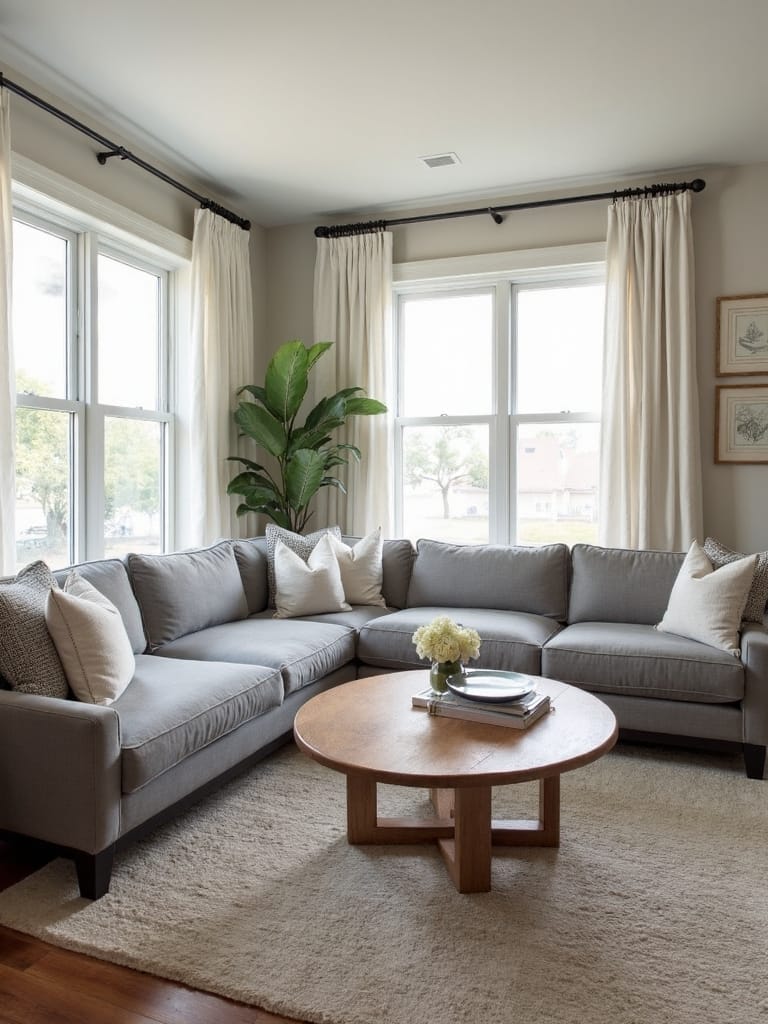
When you’re working with a compact space, an L-shaped seating arrangement changes underutilized corners into the heart of your dining area.
In your living room dining room combo, this setup creates an inviting nook while maximizing seating capacity without cluttering the space.
Pair your L-shaped bench with a round table to maintain an open flow, making conversation and movement between living and dining areas effortless.
You’ll appreciate how this configuration alters ordinary corners into cozy gathering spots.
Compact Chair and Table Combinations

Beyond L-shaped arrangements, smart combinations of compact chairs and tables reveal endless possibilities for your small living-dining space.
Round dining tables are your best friend, offering better traffic flow and more seating flexibility.
You’ll maximize space by choosing chairs that tuck neatly underneath, while stackable options and benches provide backup seating when guests arrive.
Consider drop-leaf tables that adapt to your changing needs without compromising style.
Wall-Mounted Storage and Display
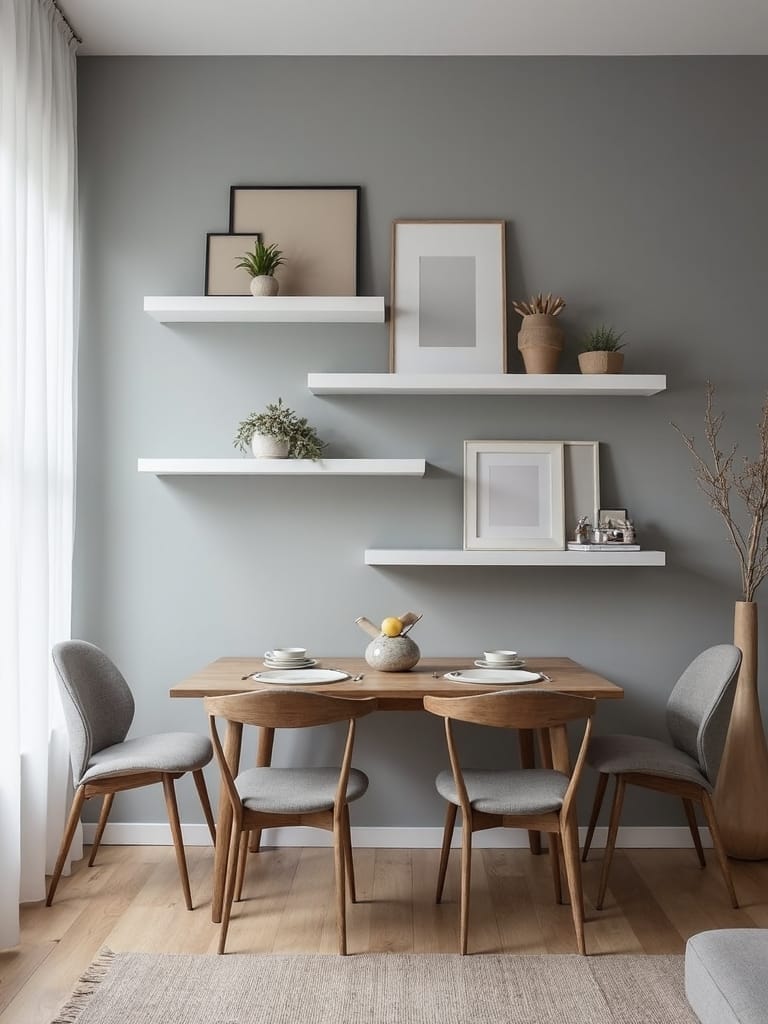
Three clever wall-mounted storage solutions can convert your small living-dining combo into a spacious haven.
Install floating shelves to display your favorite decor while storing dining essentials.
Mount a sleek sideboard that doubles as a serving station, and incorporate stylish display units for a curated look.
Don’t forget to add hooks or racks for frequently used items, maximizing every vertical inch.
Natural Light Optimization Techniques

Since natural light can alter your small living-dining combo, maximizing its presence becomes vital for creating an open, inviting atmosphere.
Position your furniture away from windows and opt for sheer curtains to maintain privacy while letting sunlight flood in.
Install mirrors opposite windows, and choose light-colored or reflective furniture pieces.
Keep your decor minimal to guarantee natural light flows freely between living and dining zones.
Color Coordination Between Spaces
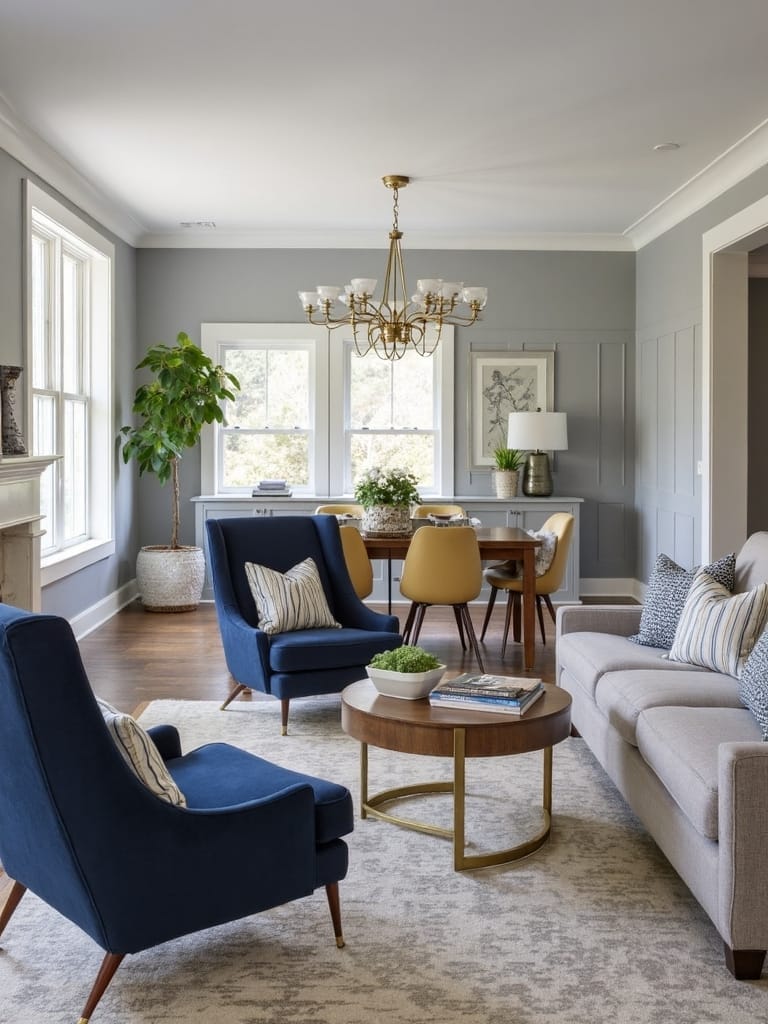
The artful selection of colors can change your small living-dining combo into a harmonious, well-defined space.
Start with a cohesive color scheme using two to three coordinating shades throughout both areas. Choose a dominant neutral tone as your foundation, then add personality through complementary accent colors.
Test different color swatches and match your furniture finishes to create a seamless visual flow between zones.
Space-Saving Corner Configurations

Making smart use of corners in your living-dining combo can dramatically expand your available space while creating an inviting atmosphere for both daily activities and entertaining guests.
Position a small round table in a corner nook for intimate dining, or install corner shelving above your dining area to maximize storage.
You’ll also benefit from placing your dining setup near windows, where natural light creates an airy, open feeling.
Floating Furniture Layouts
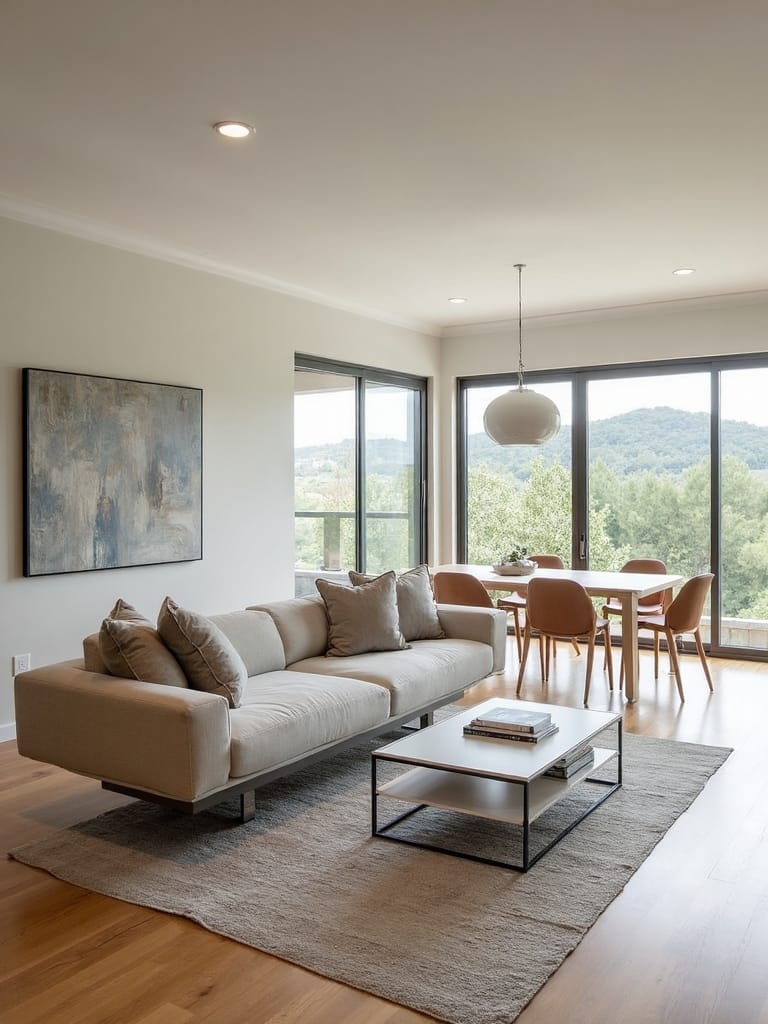
Breaking free from traditional wall-hugging arrangements, floating furniture layouts create lively spaces that maximize both function and flow in your living-dining combo.
Position your dining table and sofa away from walls to establish distinct zones, anchored by area rugs.
You’ll enjoy better conversation flow while maintaining an open atmosphere.
Consider adding flexible seating options like ottomans, and install statement lighting above your floating pieces to define each area’s purpose.
Convertible Coffee Table Dining
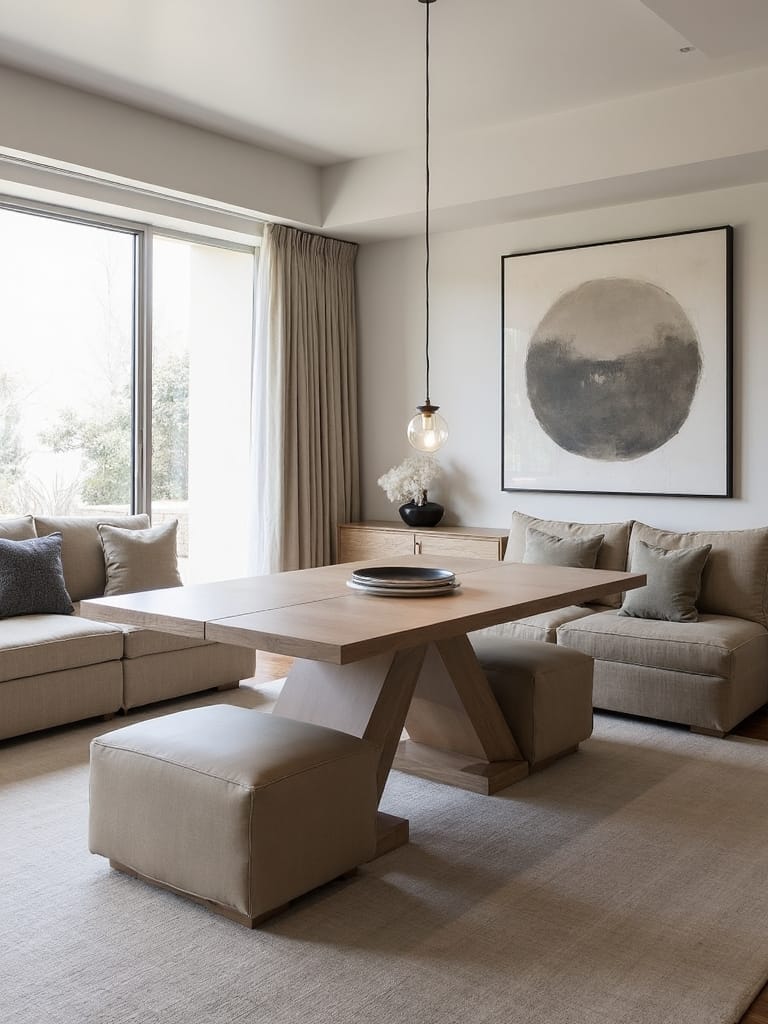
Savvy homeowners are uncovering the magic of convertible coffee tables – ingenious pieces that shift from casual living room surfaces into proper dining spaces at a moment’s notice.
For your small living room, look for models with adjustable heights and built-in storage compartments.
You’ll want a table that’s both sturdy and easy to alter. The best designs blend seamlessly with your decor while offering maximum functionality for everyday living and dining.
Minimalist Design Principles

When space comes at a premium, minimalist design principles offer a refined solution for your living room dining combo.
Focus on choosing furniture with clean lines and multifunctional purposes, while sticking to a neutral color palette that creates visual harmony.
You’ll want to maximize natural light and select fewer, more meaningful pieces that serve dual roles, keeping your space uncluttered and purposeful.
Vertical Space Utilization
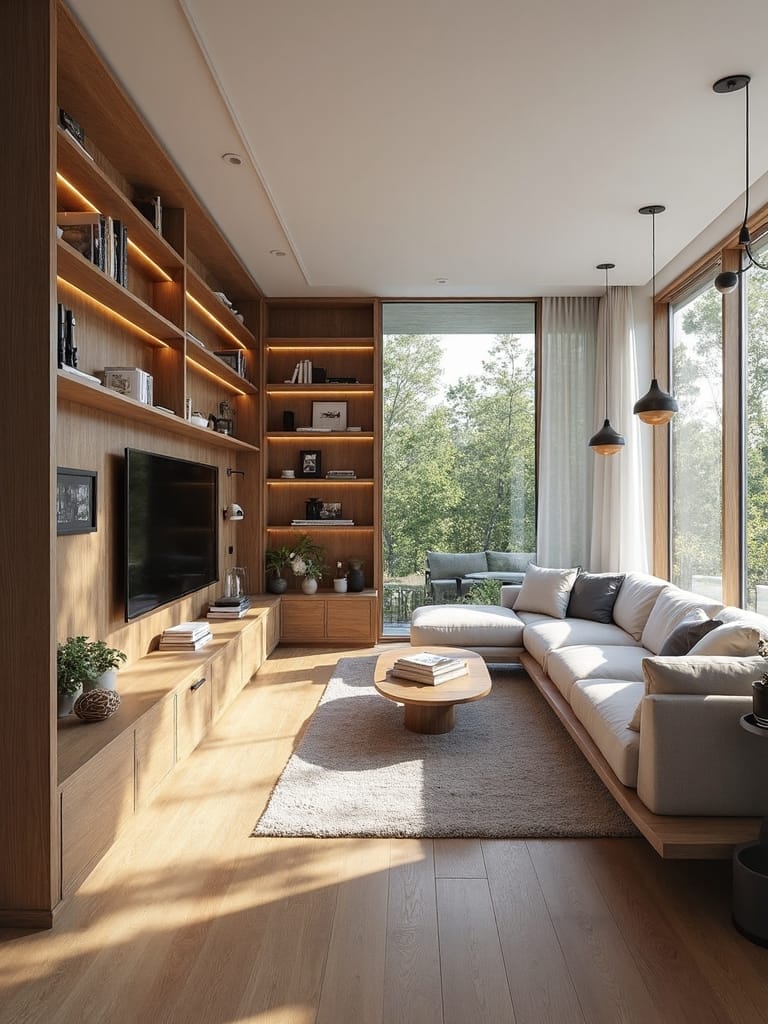
Making the most of vertical space converts your small living room dining combo into a more spacious and organized environment.
You’ll maximize functionality by installing wall-mounted shelves and tall, slim bookcases that draw the eye upward.
Add pendant lights or chandeliers to enhance the dining area, while vertical dividers and wall-mounted storage solutions help separate spaces effectively.
Consider pegboards for accessible storage of dining essentials.
Open-Concept Room Division

Despite their small footprint, living room dining combos shine brightest with an open-concept design that strategically divides spaces without walls.
You’ll create distinct zones by positioning a floating sofa as a natural boundary and laying down area rugs to define each space.
Keep your furniture’s clean lines consistent and select a unified color palette throughout to maintain flow while marking separate functional areas.
Streamlined Storage Solutions

Smart storage solutions convert your small living room dining combo into a clutter-free haven while preserving precious square footage.
Make the most of your space with multi-functional furniture like storage ottomans and wall-mounted shelves.
Add a stylish bar cart for drinks and serving, while a sideboard against the wall provides essential storage.
Tuck away dining essentials in decorative baskets under coffee tables or in corners.
Layered Lighting Design

Three distinct layers of lighting convert your small living-dining combo into a versatile and inviting space.
Begin with ambient lighting through strategically placed wall sconces, then add a statement pendant above your dining table as a striking focal point.
Complete your layered lighting design with adjustable floor and table lamps in the living area, and don’t forget to install dimmers for ideal atmosphere control.
Flexible Seating Options

Versatile seating arrangements convert a small living-dining combo into a highly functional space that adapts to your needs.
Maximize your room’s potential with flexible seating options like stackable chairs and folding seats that you can easily store away.
Consider multi-purpose pieces such as upholstered benches and ottomans that work for both dining and living areas, while nesting tables and extendable dining tables offer adaptable solutions for entertaining.
Statement Piece Integration
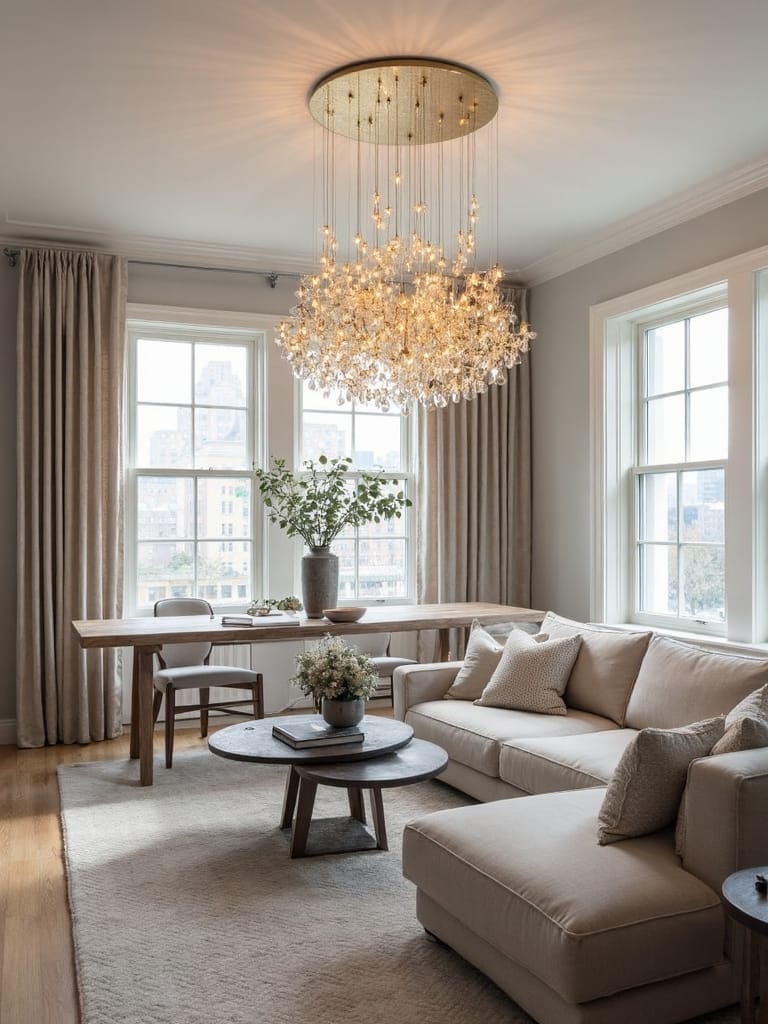
While flexible seating sets the foundation for your living-dining combo, a well-chosen statement piece can enhance the entire space to new heights.
Consider incorporating a striking chandelier or dramatic artwork as your focal point to visually separate the spaces.
You’ll find that a unique dining table, sculptural sideboard, or lively area rug can effectively anchor your dining area while maintaining flow throughout the room.
Small-Scale Furniture Selection

Smart furniture selection becomes the cornerstone of successful small living-dining combinations, where every inch counts toward creating a functional and inviting space.
When dealing with limited square footage, you’ll want to prioritize compact, versatile pieces like extendable dining tables and slim-profile chairs.
Choose lightweight, multifunctional furniture that shares a cohesive style, and consider round tables to maximize seating while maintaining easy traffic flow.
Conclusion
You’ll find that designing a small living room dining room combo isn’t as challenging as it might seem. By implementing these strategic solutions, from smart furniture placement to multi-functional pieces, you’re well-equipped to create a space that’s both stylish and practical. Remember, it’s all about maximizing your available space while maintaining distinct zones that flow seamlessly together. Start with one idea and build from there.

